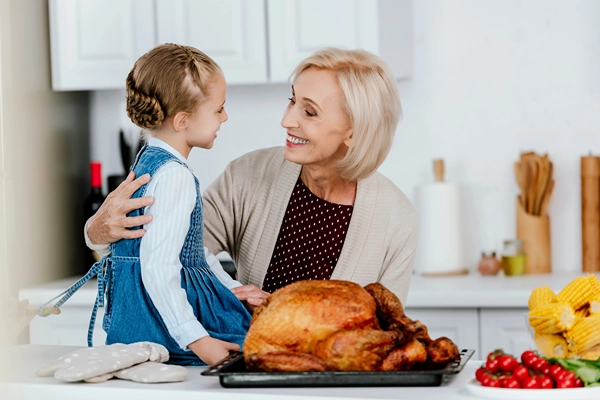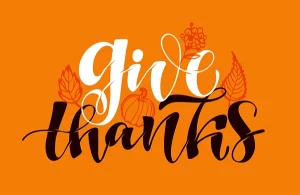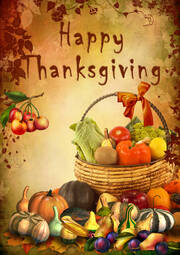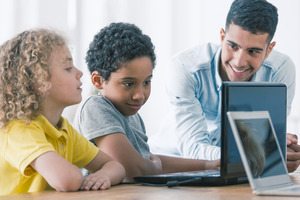The History of Thanksgiving for Students
Thanksgiving Day is a national holiday in different countries including the United States, Canada, Saint Lucia, and Liberia. It is observed as celebrating the harvest and the blessings of the last year to give thanks for it. In the United States, it’s held on the fourth Thursday in November, and in Canada, the day is on the second Monday in October.
Some popular activities during the Thanksgiving holiday include meals of turkey, pumpkin pie, cranberries, and feasts with family and friends. But do you know the origins of this annual tradition?
Thanksgiving dates back to 1621 in Plymouth Colony Harvest Festival. Whether you are an American or non-American you may be interested to know the history of Thanksgiving Day and how it became an important celebration?
In the United States, Thanksgiving is a four day long weekend with time with family on Thursday, followed by a big shopping day on Friday. Today it’s called Black Friday.
Now, let’s explore the true history of Thanksgiving Day for history-loving people like you who like to know our traditions begin.
Pilgrims Thanksgiving At Plymouth
The story begins in 1620 Fall (August/September), when the vessel Mayflower left Plymouth, England with 102 Pilgrims. A group of 102 passengers who were religious separatists quit Plymouth in search of safe land to practice their beliefs.
Due to the cold weather and lots of difficulties, almost half of the Pilgrims died and 66 of them lasted. They anchored the ship in Cape Code, which was far north of their desired place i.e. mouth of the Hudson River.
One month later, Mayflower reached the Massachusetts Bay. And the Pilgrims intended to establish Plymouth village here. The weather was too cold in the winter thus they suffered from a scarcity of food, water, and shelter and contagious diseases are also outbreak there.
As they were unprepared for the winter thus the brutally cold weather wiped out almost half of the crew and passengers. In the Spring (March), the remaining migrants shifted ashore. They were also concerned that Native American Indians Might attack them anytime.
One sudden day, Samoset, a member of the Abenaki local tribe visited the settlers and greeted them in English. A few days later, he came with Squanto, a member of the Pawtuxet tribe who was a Native American.
Squanto taught the Pilgrims different life-saving hacks and cultivation methods such as malnutrition, illness and revival tips, catching fish, hunting animals, growing corn, avoiding poisonous plants, extracting sap from maple trees, preparing medicine from plants, and so on.
Peace Treaties with the Native Americans
Pilgrims also took the opportunity to create a peace treaty with the Native Americans through Squanto. And Squanto also helped the Plymouth inhabitants to build an alliance with a local tribe Wampanoag for 50 years that was a successful treaty between Native Americans and European colonists to protect them from other tribes.
In November 1621, the Pilgrims proved themselves to harvest corn successfully in the first year. Pilgrim Governor William Bradford arranged a festive feast after getting a bountiful harvest to give thanks the God and their alliance tribes. They invited their Native Americans Allies including Squanto and Wampanoag.
Wampanoag chief Massasoit with 90 braves joined the feast and it lasted for three days. They feasted on fruits, turkey, delicious meals, and many more. This harvest feast before winter wasn’t called Thanksgiving at that time but this was the first Thanksgiving Day in history actually.
Two years later, the Pilgrims suffered from drought. Then Governor Bradford ordered them to pray and fast to God. It’s said, after their praying and fasting, rain comes and they become happy. So, they declared the fourth Thursday of November as Thanksgiving Day.
Edward Winslow the chronicler of Pilgrim wrote about it:
“Our harvest being gotten in, our governor sent four men on fowling, that so we might after a more special manner rejoice together, after we had gathered the fruit of our labors; they four in one day killed as much fowl, as with a little help beside, served the company almost a week, at which time amongst other recreations, we exercised our arms, many of the Indians coming amongst us, and among the rest their greatest King Massasoit, with some ninety men, whom for three days we entertained and feasted, and they went out and killed five deer, which they brought to the plantation and bestowed on our governor, and upon the captain, and others. And although it be not always so plentiful, as it was at this time with us, yet by the goodness of God, we are so far from want, that we often wish you partakers of our plenty.”
–Edward Winslow, December 11, 1621
Ancient Origins of Thanksgiving
Although it’s widely accepted that Thanksgiving originated from the Pilgrim Feast at Plymouth. But this was also found in ancient traditions among Greeks, Romans, and Egyptians. They feasted and paid tribute to God after getting their harvest.
Thanksgiving is also seen among the ancient Jewish, as they arranged the harvest festival Sukkot. As Native Americans had rich traditions thus, they set their footprint in Thanksgiving history before Europeans.
Thanksgiving Controversies
Some historians jury still confused about whether the Plymouth Feast was the first Thanksgiving or not. There is proof to historians that the tradition of giving thanks was recorded among the European Colonies in North America before the Plymouth Thanksgiving.
In 1565, Spanish explorer Pedro Menéndez de Avilé arranged a dinner feast and invited the Timucua tribe in Florida. After the safe reaching of the crew, they arranged a thanksgiving to God. In 1619, 38 British settlers reached their desired destination on the banks of Virginia’s James River, Berkeley Hundred. Then, they declared the day as a day of thanksgiving to the God.
Today, Wampanoag Indians point to a different telling Thanksgiving. In subsequent years, there would be many conflicts that would result in thousands of deaths. The idea of Native American’s and pilgrims eating together was not in the tradition of big celebration of giving thanks for a large harvest. Food preparation for Native American’s already had daily rituals of giving thanks to the Creator for their food and survival. While the English and the Wampanoag Indians did eat together at times, the celebration of the first harvest in 1961 looked very different to the ancestral natives of the land.
How Thanksgiving Became a Holiday

Pilgrim Thanksgiving celebration become very popular among New England settlements quickly. In the 19th century, Sarah Joseph Hale, an American writer campaigned for a national Thanksgiving Day in the United States. In 1863, President Abraham Lincoln also encouraged Americans to celebrate Thanksgiving Day.
The following President George Washington issued an announcement on November 26, 1789, for a public thanksgiving on the fourth Thursday in November. From then Americans, particularly North Americans celebrated the public holiday as Thanksgiving Day.
Canadian Parliament declared the second Monday in October as a general Day of Thanksgiving to God for the blessings of Canada and bountiful harvest.
Conclusion
 Thanksgiving Day is now an important day for Americans and Canadians. And more countries have adopted this tradition to be thankful for for their blessings. Today’s Thanksgiving festive celebration adds more fun and events but the origin was the Plymouth Harvest Feast in 1621.
Thanksgiving Day is now an important day for Americans and Canadians. And more countries have adopted this tradition to be thankful for for their blessings. Today’s Thanksgiving festive celebration adds more fun and events but the origin was the Plymouth Harvest Feast in 1621.
Happy Thanksgiving!
Explore how other special days and holidays came to be:
Last Updated on November 25, 2025 by SafeSearchKids Editorial Team






